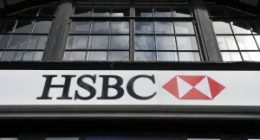
The average rate for a two-year and a five-year fixed mortgage has fallen slightly for the first time since 29 May, providing hope to borrowers that home loan rates could have peaked.
Currently the average two-year fixed rate across all deposit sizes is 6.79 per cent, down from an average rate of 6.81 per cent yesterday, according to MoneyFacts.
The five-year fixed average is now 6.31 per cent, down from a 6.33 per cent.

Fall in inflation offers some breathing space for the mortgage market but it is unclear if it will translate into rate reductions
Markets reacted positively to the news that both CPI and core UK inflation fell in June, after disappointing data in May resulted in a series of sharp rate hikes as lenders factors in the likelihood of further base rate rises.
The Consumer Prices Inflation measure dropped to 7.9 per cent in June, down from 8.7 per cent in May, falling further than the market prediction of 8.2 per cent.
As a result, swap rates – the main pricing mechanism for mortgage rates – are expected to continue falling after dropping slightly last week.
However, despite the news NatWest hiked several of its fixed rate products by up to 0.4 per cent for new business. All of the mortgages affected are for buyers or homeowners with 10 per cent equity in the home.
Yet Nick Mendes, mortgages technical manager at John Charcoal says it is hard to know why NatWest has upped its rates but suggests it may be to maintain service levels.
For borrowers who need to remortgage in the coming months the question is whether they should lock-in a deal now or wait to see if rates fall further.
So far brokers say they have not seen lenders directly dropping rates although many suggest they now have some breathing space from the unforgiving pace of rises over the past few weeks.
While the cost of credit has now fallen marginally, lenders will be keen to play it safe and avoid being caught out if costs go back up.
This means that they are unlikely to drop prices directly in line with swap rates and instead retain a margin that will keep prices around their current levels.

Rapidly changing mortgage rates over the past few weeks have left brokers and borrowers struggling to catch a breath amid the chaos
The market still expects the Bank of England to raise its base rate up from its current level of 5 per cent to around 6 per cent by the end of the year, signalling more pain for borrowers may be to come.
Kirsty Wells, director at Blueprint Mortgages, said, ‘Lenders have still been emailing this week to advise of rate increases, so I think it is too early to breathe a sigh of relief just yet.
‘Sentiment may have improved but, for now at least, it hasn’t translated into a major lender repricing downwards.’
Others agree, recommending borrowers risk disappointment if they are looking for overnight reductions.
Phil Leivesley Sales Manager at MB Assocaites says, ‘It’s being reported today that, according to Moneyfacts, the average 2 and 5-year fixed product is priced lower today than yesterday.
‘This must mean that some lenders have either reduced their pricing, or those offered products above the average have withdrawn their products.
‘However, unless the lenders offering the very cheapest products in the market reduce their rates, the vast majority of borrowers are not going to feel any benefit.’
Leivesley adds he has been contacted by clients who are expecting that rates we’ve secured recently are now immediately cheaper.
‘We’re hopeful that the picture will improve, but it’s important to remember that fixed rate mortgage pricing is a complex issue, and in the short-term the best expectation is that the cost of borrowing stops increasing and remains stable.’
If lenders reduce rates to take advantage of the drop in swaps – the main mechanism used for mortgage pricing – borrowers about to come off their fixed rate can lock-in a cheaper deal.
Most lenders will let you lock-in a new rate six months ahead of your current deal ending. It means that if rates then rise before your old deal ends you are protected.
If they continue to fall you can jump off and on to a cheaper one up until your existing fix comes to an end, meaning borrowers can get the best rate within the half-year window.
Kylie-Ann Gatecliffe, director at KAG Financial ‘Generation Home were the first lender to send a ‘we are reducing our rates’ email last night.
‘This is the first of its kind in weeks so it is a welcome change for brokers and their clients. Hopefully, we will see more lenders follow suit in the days and weeks ahead.’










